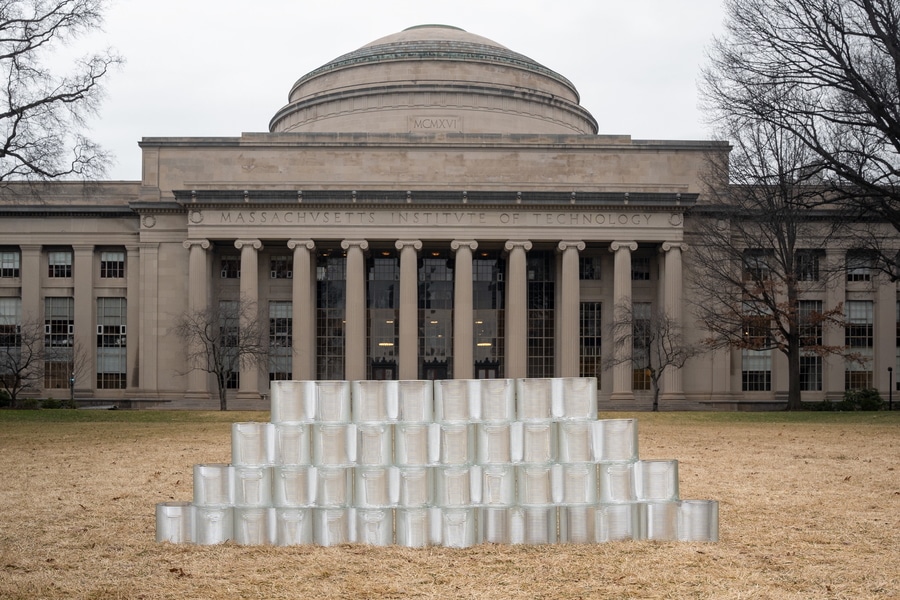This post was originally published on Eco Watch
The technology for 3D printing has come a long way from printing product prototypes from acrylic resin. In recent years, researchers have found ways to use algae as a bioplastic, pea protein to create sustainable plant-based salmon, and even everyday foods like peanut butter and banana to make cheesecake. Even buildings have been made using 3D-printed concrete.
Now, researchers have found a way to reuse old glass by 3D printing it into strong, durable and reusable building bricks that could help lower the embodied carbon in buildings.
According to the U.S. Environmental Protection Agency (EPA), manufacturing construction materials makes up about 15% of global greenhouse gas emissions, highlighting a need for more sustainable building materials.
With advancements in 3D printing, engineers from the Massachusetts Institute of Technology (MIT) are exploring ways to reduce these emissions by developing reusable construction products with 3D printers that can build blocks from materials such as recycled glass.
Inspired by the circular potential of construction, the engineers used 3D printing technology from Evenline, a 3D printing company, to develop figure eight-shaped blocks made with soda-lime glass that could interlock like toy building blocks, or Legos, to improve the reusability of construction materials.
Manufactured glass bricks assembled together in a wall configuration at MIT’s Killian Court. Ethan Townsend
“Glass is a highly recyclable material,” Kaitlyn Becker, assistant professor of mechanical engineering at MIT, said in a statement. “We’re taking glass and turning it into masonry that, at the end of a structure’s life, can be disassembled and reassembled into a new structure, or can be stuck back into the printer and turned into a completely different shape. All this builds into our idea of a sustainable, circular building material.”
The engineers presented the results of three methods of manufacturing bricks — fully hollow with no interlocking, print-cast, and fully printed with interlocking components — in a study published in the journal Glass Structures and Engineering.
They tested the bricks with a hydraulic press and found that bricks made mostly from printed glass with separate interlocking features on the bottom of the brick were the strongest and held up to the highest amount of pressure. In their testing, the engineers found that the layered blocks could withstand pressures similar to what concrete blocks can withstand.
“We have more understanding of what the material’s limits are, and how to scale,” explained Michael Stern, former MIT graduate student and founder and director of Evenline. “We’re thinking of stepping stones to buildings, and want to start with something like a pavilion — a temporary structure that humans can interact with, and that you could then reconfigure into a second design. And you could imagine that these blocks could go through a lot of lives.”
The results show promise in using a material other than plastic or concrete for constructing with 3D printers, and these engineers join many other professionals in working to reduce construction emissions with this technology.
This summer, the University of Maine’s Advanced Structures and Composites Center (ASCC) unveiled an affordable housing project for Austin, Texas. For this initiative, which is set to start printing in 2025, the center is using wood residuals for constructing 3D-printed homes.
According to Habib Dagher, executive director of ASCC, this method could become “very competitive with current housing construction costs,” he told CNN. The current challenges to scaling 3D wood printing include 3D printing this material at high speeds and meeting existing building codes, which Dagher said can take a long time to change.
The post Engineers Create Building Bricks From 3D-Printed, Recycled Glass appeared first on EcoWatch.





0 Comments